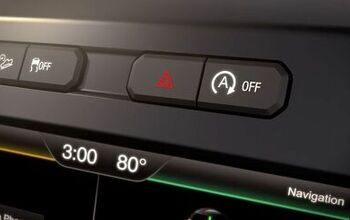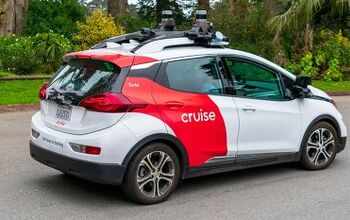QOTD: How Much Money Do You Need to Be Shown?

A piece you’ll see later this morning may have something to do with today’s topic. We’re talking handouts, incentives, rebates, discounts, credits — anything that can ease the financial burden of buying a new vehicle.
Specifically, that class of vehicle few people want to buy (and frankly, a class of vehicle more than a few people would rather not read about): Electric cars.
As Tesla and GM buyers face a once-juicy tax credit that’s now pared in half, and as other automakers stare down the barrel of a reduced federal incentive, we have to ask: what would it take, price-wise, to get you into one of them?
For the sake of simplicity, let’s say the only incentive to be had on any fully electric vehicle comes in the form of a government rebate.
You’re in the market for a vehicle. Perhaps you’ve made up your mind that now is the time you’ll finally go green. Some of you might prefer something more traditional, but are capable of being lured into an EV if the price is right. Still others might only take ownership of a gas-free car if a helpful outside force knocks the price down to near zero, because truckin’ is your life.
Now, each one of you is approaching this from a different place, with varying needs and attitudes dictating which electric model you’d buy, and what kind of rebate you’d need to usher you into that car. There’s no shortage of ICE-powered competition in this thought exercise. The market remains the same, but you’ve been offered the opportunity to save however much you want off the MSRP of an EV.
Sure, we’d all like a free car, but let’s be honest. Many of us would still pay a certain, perhaps not lofty, amount for a new car that eschews internal combustion. Looking at the offerings out there (Kona Electric, Tesla Model 3, Chevy Bolt, et al), which model would you choose, and how much would others have to pony up to nudge that vehicle to the top of your shopping list?
[Image: Hyundai]

More by Steph Willems
Latest Car Reviews
Read moreLatest Product Reviews
Read moreRecent Comments
- SCE to AUX My son cross-shopped the RAV4 and Model Y, then bought the Y. To their surprise, they hated the RAV4.
- SCE to AUX I'm already driving the cheap EV (19 Ioniq EV).$30k MSRP in late 2018, $23k after subsidy at lease (no tax hassle)$549/year insurance$40 in electricity to drive 1000 miles/month66k miles, no range lossAffordable 16" tiresVirtually no maintenance expensesHyundai (for example) has dramatically cut prices on their EVs, so you can get a 361-mile Ioniq 6 in the high 30s right now.But ask me if I'd go to the Subaru brand if one was affordable, and the answer is no.
- David Murilee Martin, These Toyota Vans were absolute garbage. As the labor even basic service cost 400% as much as servicing a VW Vanagon or American minivan. A skilled Toyota tech would take about 2.5 hours just to change the air cleaner. Also they also broke often, as they overheated and warped the engine and boiled the automatic transmission...
- Marcr My wife and I mostly work from home (or use public transit), the kid is grown, and we no longer do road trips of more than 150 miles or so. Our one car mostly gets used for local errands and the occasional airport pickup. The first non-Tesla, non-Mini, non-Fiat, non-Kia/Hyundai, non-GM (I do have my biases) small fun-to-drive hatchback EV with 200+ mile range, instrument display behind the wheel where it belongs and actual knobs for oft-used functions for under $35K will get our money. What we really want is a proper 21st century equivalent of the original Honda Civic. The Volvo EX30 is close and may end up being the compromise choice.
- Mebgardner I test drove a 2023 2.5 Rav4 last year. I passed on it because it was a very noisy interior, and handled poorly on uneven pavement (filled potholes), which Tucson has many. Very little acoustic padding mean you talk loudly above 55 mph. The forums were also talking about how the roof leaks from not properly sealed roof rack holes, and door windows leaking into the lower door interior. I did not stick around to find out if all that was true. No talk about engine troubles though, this is new info to me.


































Comments
Join the conversation
I keep vehicles for a minimum of a decade and 150,000 miles. You can't pay me enough to drive a penalty box that long.
Set the incentive high enough to erase the price difference between the typical mainstream EV and comparable typical mainstream gas car. Not "after gas savings" -- before gas savings. That will give people confidence that they are for sure coming out ahead. Ontario until recently did this with a $13,000 incentive. I don't know of anyplace in the US where combined state and federal rebates are that big. But they're pretty good in some places like California and Colorado, let's say $10 grand total. I will say though that a non-refundable, non-carryable, year-end tax credit is a TERRIBLE way to do an incentive. People aren't sure whether or how much it will apply to them. If you want an incentive to work fully, either make it payable as a check within a week of registration, or automatically apply it at the point of sale.